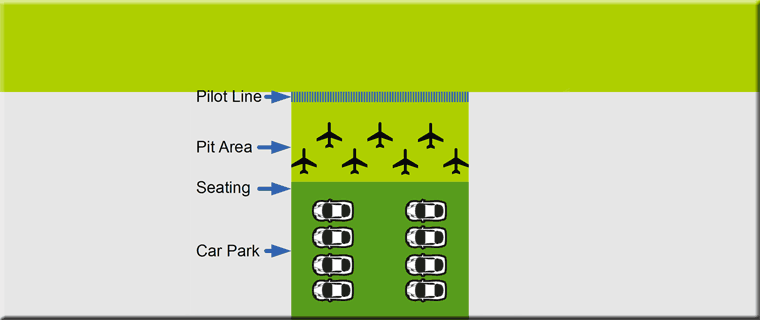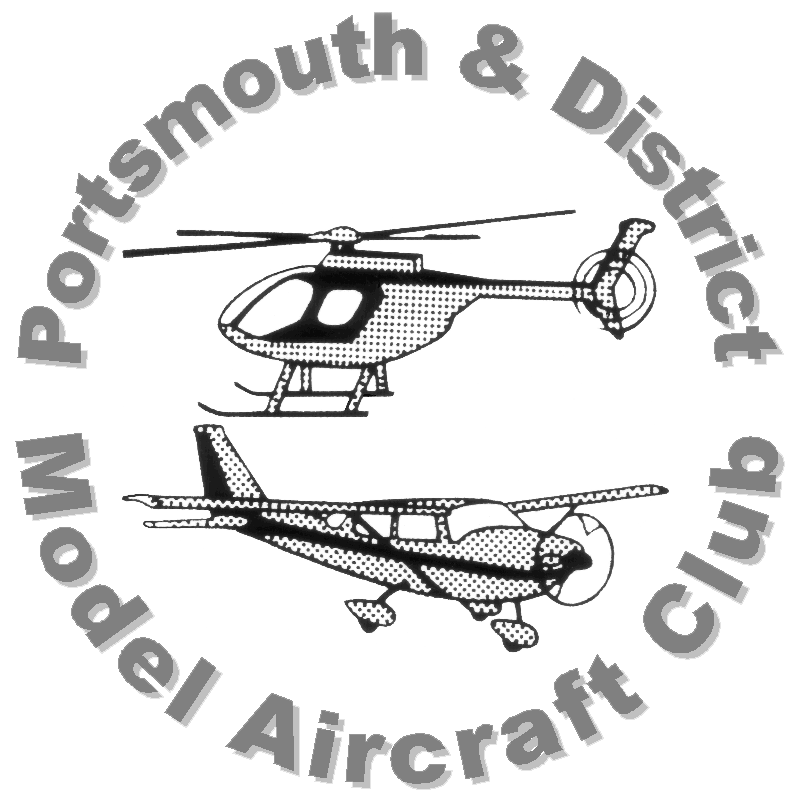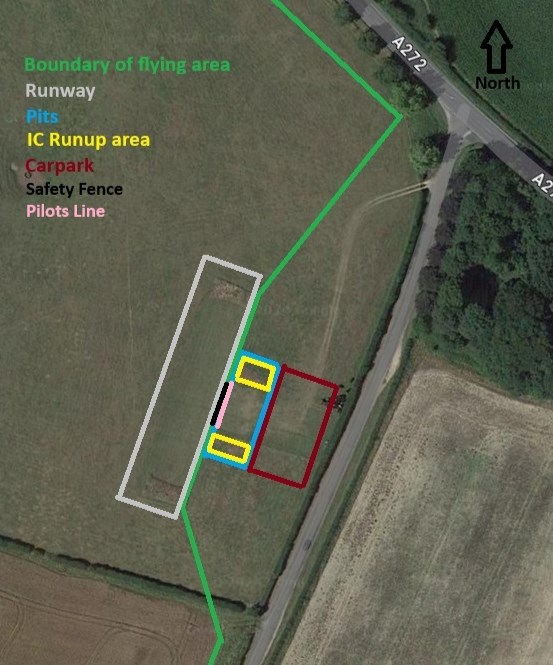Introduction
Primarily the site is a working farm on which PADMAC are permitted to fly model aircraft for which an annual rent is paid from membership subscriptions. At no time should the farm’s business be put at risk by damage to farm property or livestock, do not overfly livestock, leave debris that could be eaten. Gates, fences and land should also be respected
The following PADMAC Flying Site Rules are to be:
- Accepted by all members during membership application and subsequent renewals.
- Reviewed and approved by the PADMAC Membership at each club AGM
- Followed at all times.
The objective of this rule set is to promote safe operation of model aircraft at the PADMAC flying site and to protect members and public safety and ensure the continued operation of the PADMAC site.
Failure to comply with the rules will result in disciplinary procedure and may result in loss of an individual's membership.
Any member may challenge or propose amendments to the rules at an AGM or through the committee at any time.
Flying Times
| IC Power | Electric/Silent | |
| Monday to Saturday | 10:00 to 18:00 | 10:00 to Sunset |
| Sunday | 11:00 to 18:00 | 11:00 to Sunset |
Flying Site
- The gate to the site is to be kept shut at all times, unless the farmer has kept it open for his work. If livestock are present then make sure the open gate is attended at all times when you are entering or exiting to make sure no animals escape as this could result in the club losing the site and cost us a great deal of money for damage to livestock.
- The normal car parking area is adjacent to the site cabinet, but members should satisfy themselves that the ground is firm enough before entering the field and parking up.
- On entering the site, members should enter their name and details in the log book held in the site cabinet, also log out when leaving.
- Keep the site tidy, take your rubbish and bits of broken planes home with you.
- Children must be supervised at all times and must not be allowed to run around the pit area or runways.
- No dogs are permitted at the flying field unless kept on a lead or tethered.
- Any incident involving a third party or another member must be reported to the Committee.
- The electric fence is to be re-installed at the end of a flying session to prevent animals getting onto and damaging the flying patch.
Safety
- It is the sole responsibility of the pilot (Operator) to ensure that their model aircraft is operated legally and safely at all times (See CAA Drone Guidelines and BMFA Handbook).
- All members must observe field discipline and comply with the Air Navigation Order, all relevant BMFA safety codes as contained within the BMFA Handbook and Civil Aviation publication (CAP) 658.
- The pit area is situated between the parking area and pilots line (See diagram below)
- Do not taxi in or out of the pits area. Wheel or carry your model well clear of the pits before commencing taxying and stop the model well clear when taxying back after landing. Helicopter pilots may start their engine(s) in the pit area but should only run up the rotors when on the patch. Helicopters should also shut down on the patch when flying is completed.
- Pilots should always stand together along the pilots line when controlling and flying models to aid pilot communication and safe operation. (See diagram below).
- Only 2 I/C powered models to be in the air at any one time.
- Any person wishing to enter or cross the runway area must seek clearance from any pilots flying at the time before doing so.
- Fly within the designated flying area of the site, should you land in an adjacent field then avoid damaging fences or crops when retrieving the model.
- When flying helicopters, control line models, and line launched gliders etc, other members present should be consulted, before any flying takes place so that the area may be freed up to accommodate the special requirements of these types of models.
- IC engines should only be started in the pits to avoid grass burns from fuel spills on the runway.
- Ground running of IC engines and electric motors should only be performed with the model either physically tethered or restrained by a helper. Ground running should be conducted at the edge of the pits with the nose of the model pointing away from the pits. This minimizes the risk of a break away model or propeller failure debris from hitting people in the pits area.
- A pre-flight control surface movement check with engine/motor running at 100% power should be performed on the runway area prior to releasing the model.
- Transmitters should not be taken away from the flight line when retrieving an aircraft, unless to do so would aid retrieval of the model. In this instance the matter should be brought to the attention of other pilots so that this may be carried out without the risk of over-flying a live transmitter signal which could lead to possible control interference.
- Should an aircraft go out of control, the first priority must be the safety of persons with the second being avoidance of damage to property. A warning is to be shouted by the pilot which is to be taken up by other members.
- Mobile telephones must not be taken onto the flight line as there is a risk to control integrity caused by a mobile phone RF signal interfering with the radio control transmitter link.
- No smoking is permitted in the vicinity of inflammable fuels and materials.
- No pesticides, herbicides, or other hazardous substances to be used.
Noise
- All aircraft must comply with the Department of Environment Noise Code, (see the BMFA Handbook for details).
- The maximum allowable engine noise is currently 82 dB(A) at 7 meters in accordance with the guidelines laid down by the BMFA.
- It is the responsibility of the pilot/operator to ensure that their model complies to current noise limits.
- A sound meter is available on request to a committee member or a sound meter app on a mobile phone is an acceptable alternative.
- Be mindful that excessive noise from model aircraft has led to the loss of model flying sites.
Radio Frequencies
- Members may only fly on permitted UK Frequencies and power ratings.
- Members wishing to fly on 27 or 35 MHz should check with other pilots before turning on transmitters.
Guests
- Members may invite guests to fly subject to the approval of a Committee member.
- Approval must be requested for each time a guest is invited, approval will be limited to 3 visits per year per guest.
- Proof of BMFA or other insurance must be shown to a committee member.
- For foreign visitors their insurance and qualifications may be required.
- The club can arrange temporary BMFA insurance cover if required.
- Guest(s) are the responsibility of the Host at all times and should never fly on their own without the host in attendance.
Competence To Fly Self Assessment Checks
- For any model type a member/guest wishes to fly at PADMAC site, be it alone or not, the following guidelines are to be followed:
- As the responsible pilot you must be confident to fly the model type, taking into account size, speed, complexity, weather conditions and personal experience.
- The model must comply to CAA regulations.
- The model must be able to fly within the site boundaries.
- The model is safe and well maintained.
- The model does not exceed 82 dB(A) at 7 meters.
- Line of sight be maintained at all times.
- A failsafe system must be installed and functionally checked prior to the first flight or after the installation of new parts or general maintenance.
- Range tests conducted.
- If in doubt don’t fly, there is plenty of help available within the club membership to ensure all the above can be satisfied.
- If still under training by a PADMAC instructor you will be advised when you are competent to fly solo either supervised or unsupervised.
- Failure to comply with the above will be treated in the same way as any other rule violation.
Accident and Near Miss Reporting
- Any incident involving a third party or another member must be reported to the Committee. This is to enable the club to review any issues that happen and to ensure that suitable actions are put in place to keep all club members and the general public safe. It may also be necessary to inform the CAA or AAIB depending on the incident.
- See the PADMAC Incident Reporting page for more information and an easy to fill in form.
Flying Site Layout

Issued by the PADMAC committee, 1 January 2025

